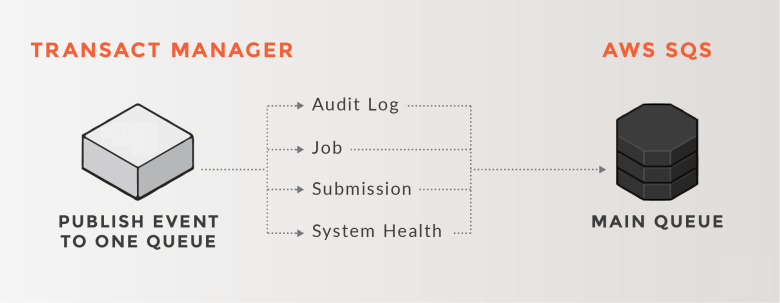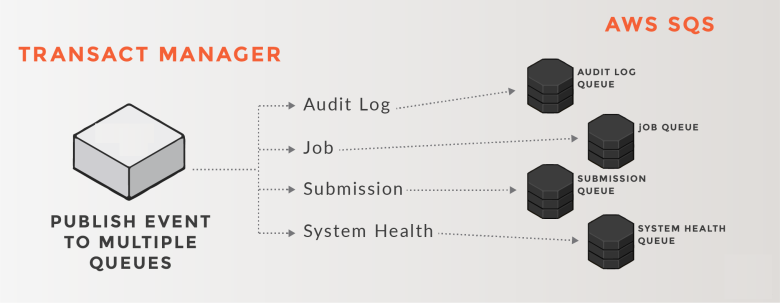System Event Publisher Overview
Journey Manager (JM) The transaction engine for the platform. | System Manager / DevOps | 18.05 This feature was introduced in 18.05.
Journey Manager allows you to send server events and other information to external systems, usually clients, in near real-time using System Event Publisher (SEP). Clients can then use this functionality to monitor Manager from your external systems, such as Splunk, via a third-party message queue using standard protocols. Also, clients decide what type of data they want to collect, so they can:
- Monitor workload of their staff
- Build systems to track applications
- Monitor system or integration issues
System Event Publisher hooks into Manager’s transaction processing engine, records events in memory and sends the applicable events to a queue. It all happens in the background to maintain performance of the user flow. Manager attempts to retry delivery of event messages in case of an error, but it can't be guaranteed, meaning, event messages are published on a best effort basis.
A Manager administrator can configure a System Event Publisher to publish Manager's events using Amazon AWS SQS, and, if required, authenticate a connection using the Amazon AWS Security Token ServiceThe AWS Security Token Service (STS) is a web service that enables you to request temporary, limited-privilege credentials for AWS Identity and Access Management (IAM) users or for users that you authenticate (federated users).. You can further customize it to publish only events that are essential to be monitored within your external systems.
You can configure System Event Publisher to publish the following events to external systems:
- Submission audit log entries
- Submission Collaboration Jobs: steps, actions and action properties, and collaboration job update messages
- Submissions including data extracts, properties, milestones, and Groovy logs
- Submission update messages
- Submission form data mapping
- Submission error log entries
- Submission event log entries
- Submission Groovy service log entries
- Submission Groovy service log data
- Submission milestones
- Submission properties
- Transaction statuses
- System health
- User authentication events. | 18.11 This feature was introduced in 18.11.
System Event Publisher can publish events to the one default queue and up to three separate queues. For example, job, submission and system health events can be sent to three separate queues respectively. To achieve this, System Event Publisher should be configured differently. There are two distinct configurations:
A Single Queue
Multiple Queues
Next, learn how to configure system event publisher.

